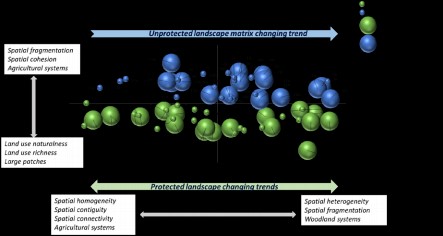Marine, N., Arnaiz-Schmitz, C., Herrero-Jáuregui, C., de la O Cabrera, M.R., Escudero, D., Schmitz, M.F.
Protected landscapes in Spain: Reasons for protection and sustainability of conservation management
(2020) Sustainability (Switzerland), 12 (17), art. no. 6913, .
DOI: 10.3390/SU12176913
RESUMEN
Landscape conservation efforts in many European countries focus on cultural landscapes, which are part of the cultural identity of people, have a great heritage significance, improve the living standards of local populations and provide valuable cultural biodiversity. However, despite a wide arrange of protective measures, the management of preserved areas is seldom effective for the protection of cultural landscapes. Through a multi-approach analysis, we characterise the main heritage attributes of 17 Protected Landscapes in Spain and assess their management effectiveness by quantifying the evolution of the spatial pattern inside and outside protected landscapes. Our method has proven useful to quantitatively describe the spatial-temporal patterns of change of the protected and unprotected landscapes studied. We highlight the following results: (i) the concepts of uniqueness and naturalness are not appropriate to preserve cultural landscapes; (ii) the land protection approach currently adopted is not useful for the protection of cultural landscapes, particularly of the most rural ones; (iii) the landscapes studied with greater rural features can be considered as “paper parks”. We recommend that different protection measures focused on the needs and desires of the rural population are taken into account in order to protect cultural landscapes that are shaped by traditional rural activities.
